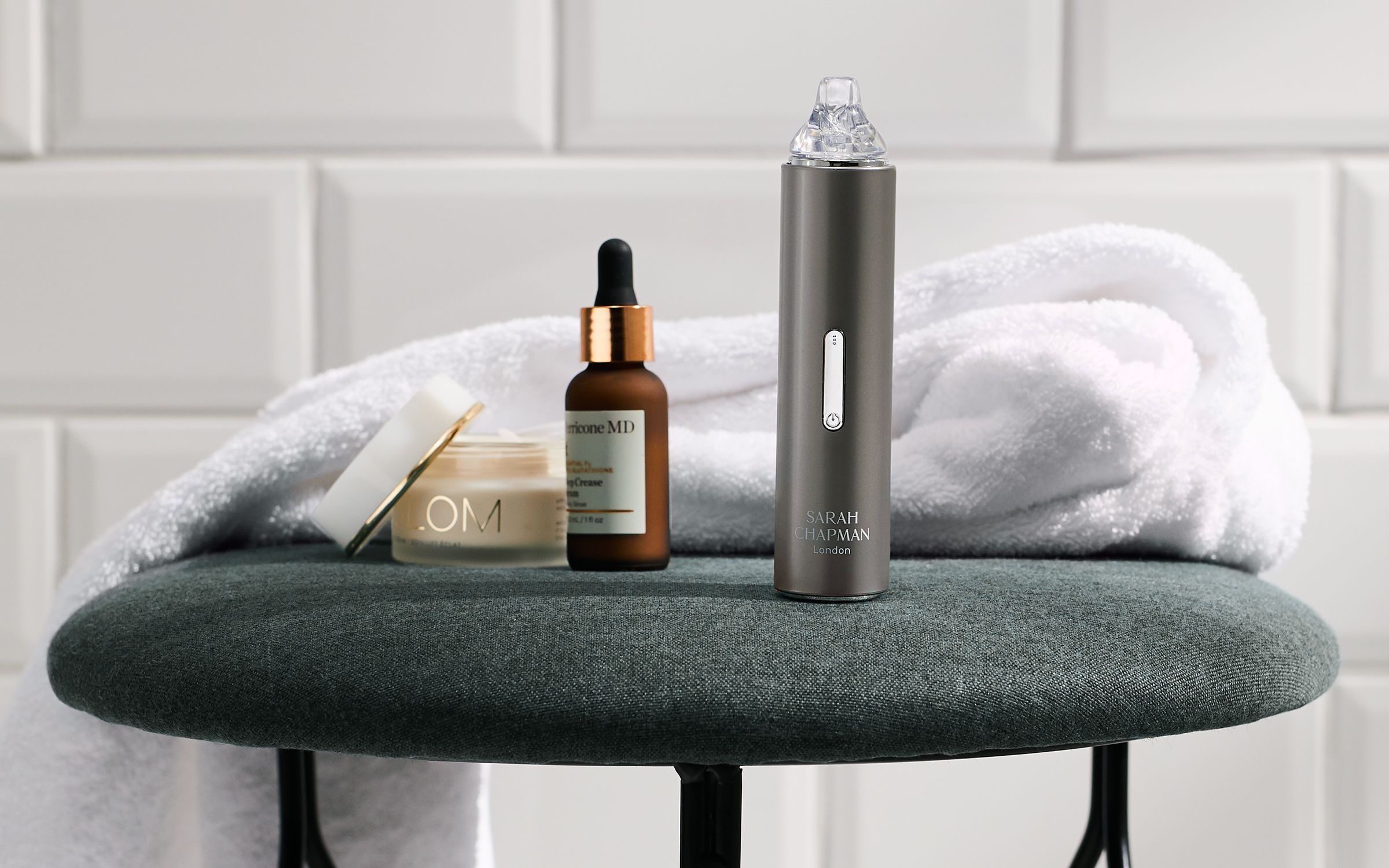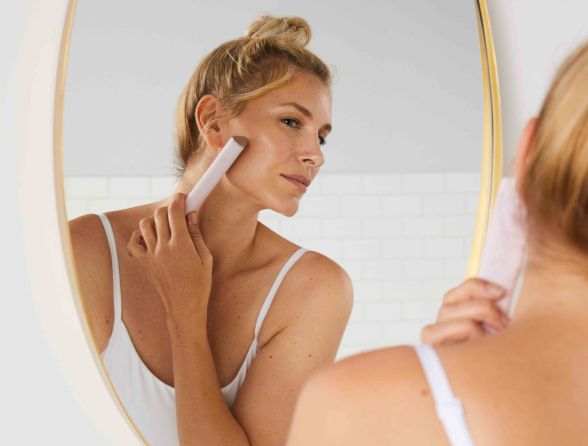The best way to minimise pores, according to a doctor
The top skincare tips, tricks and strategies you need to combat enlarged pores
Perhaps it’s the fact that our faces are coming under scrutiny more than ever before thanks to selfies, zoom calls and HD technology. Or maybe it’s the raft of dedicated skincare that’s suddenly brought our attention to their presence. Either way, pores have become beauty’s latest number one enemy and, according to research by Harris Poll, almost one in three women are more concerned about their pores than they are their wrinkles. ‘Move over lines and wrinkles, it’s now all about large pores,’ confirms top aesthetic doctor Dr Galyna Selezneva.
What are pores?
So, what exactly is a pore and how does it become enlarged? Time to go back to biology class. ‘Skin is the largest organ of the body and, apart from the palms of our hands and soles of our feet, it’s covered in tiny hairs,’ explains Dr Galyna. ‘Each hair follicle has a pore at the top of it and inside is a sebaceous gland which produces oil (or sebum).’
Dr Galyna notes that while we also have sweat pores, it’s these oil pores (or hair follicles) that tend give us troublesome texture issues. ‘The width of the pore neck depends on how much collagen and elastin (and other connective tissue molecules) there is in the dermis itself,’ confirms Dr David Jack, a leading London-based aesthetic doctor. ‘With age, UV damage and other factors, the abundance of connective tissue decreases, providing less support for the neck of the pores so they tend to become dilated as we age, giving the impression of larger pores.’
However enlarged pores are not just down to the ageing process. ‘Pores can also increase in size if the production of sebum increases, for example with changes in hormone levels, particularly testosterone,’ he adds.
The bad news? Both experts agree that, fluctuations in hormones aside, sebum production or how ‘oily’ your skin is often comes down to genetics. The good news? Mother Nature can be given a helping hand.
How to make pores appear smaller
Before we tackle how to make pores appear smaller, a quick word on these annoying little things we spend so much time thinking about. First of all, no amount of steam can open and close them (they don’t have hinges). Instead, it’s the heat from the steam that dilates them while loosening any build-up inside and causing it to rise to the surface.
Secondly, while you can’t reduce the number of pores on your face, you can affect how visible they are. And this brings us on to how to minimise them. In the main, this can be done by shrinking them with collagen-boosting actives, clearing them out with sebum-slaying ingredients such as salicylic acid, using products that employ a temporary tightening effect, or disguising them with skin-smoothing makeup.
‘The best way to minimise the size of pores is to increase the levels of connective tissue in the dermis and to decrease the production of sebum,’ says Dr Jack. ‘Stimulation of dermal connective tissue comes from both skincare (vitamin C, retinoids and always using a good SPF to prevent UV damage) and also in-clinic treatments that encourage production of collagen and elastin such as Profhilo, microneedling and radiofrequency-based treatments like Morpheus8. Reduction of sebum production is best done by skincare ingredients such as retinoids and alpha-hydroxy acids (or AHAs), which decrease the activity of the sebaceous glands.’
Dr Galyna adds that when it comes to a pore-perfecting skincare routine it pays to go back to basics: ‘Always, always remove your makeup before going to sleep to avoid it sitting in your pores overnight and try to get into the habit of doing a double cleanse. The first cleanse is designed to remove makeup (using a gentle oil-based product), while the second part employs a cleanser with active ingredients like glycolic, lactic or salicylic acids, which are particularly good for oily skin and unclogging pores.’
If you don’t already, Dr Galyna also recommends exfoliating once or twice a week with chemical agents such as AHAs or salicylic acids but, ‘avoid rough, mechanical exfoliators that can simply damage the skin’.
Products to purge your pores
Pore camouflagers
Pore minimisers








